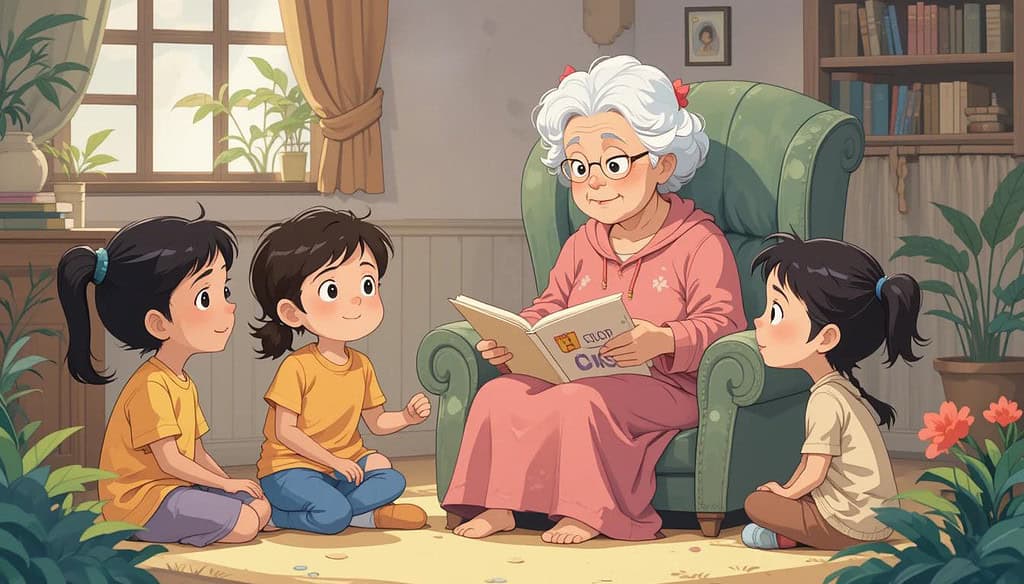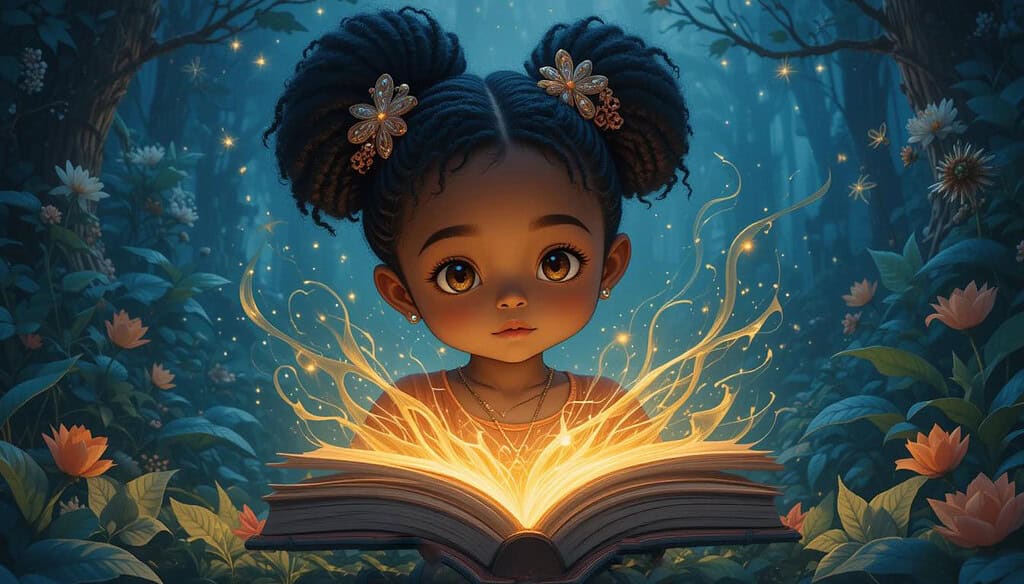Table of Contents
The Blueprint of A Story

Have you ever considered the parallels between crafting a story and constructing a house? While it may seem unusual initially, allow me to elaborate. Envision this: a story is not merely a collection of random thoughts scattered across a page; it is a meticulously designed framework, where each element serves a specific function. Similar to the process of building a house, one requires a robust foundation, sturdy walls, and a roof that unifies the entire structure. Just as one would not embark on construction without a detailed plan, the same principle applies to the art of crafting a story.
At its core, writing a story is about creating something that lasts—a narrative that resonates with your audience and stands tall amid countless others. But for that to happen, you need to get the basics right. Think of the theme as your foundation, the thing that keeps everything steady. Without it, the whole structure could crumble. Your characters and conflicts are the walls, adding strength and dimension. The plot acts like a blueprint, giving your story direction, while the tone and emotions are the décor and lighting, bringing life and warmth to the space.
When these elements come together, they create something magical—a story that’s not just entertaining but also meaningful. On the flip side, when any of these pieces are missing or out of sync, the story feels incomplete, like a house with no roof or crooked walls.
Here’s the thing: great stories don’t happen by accident. Sure, inspiration might strike in a flash, but crafting a story that captivates takes intentionality. It’s about understanding what makes each part work and how they all fit together. Just as a builder wouldn’t skip steps or ignore details, a writer shouldn’t either.
In this article, we’re diving into the nuts and bolts of storytelling through the lens of this house-building metaphor. We’ll explore eight key aspects that every story needs to thrive. From the foundation of your theme to the emotional lighting that sets the mood, each piece plays a vital role.
So, if you’re ready to roll up your sleeves and start laying the bricks of your next great story, let’s dive in. By the end, you’ll have your own storytelling blueprint—a guide to crafting narratives that stand tall and shine bright.
8 Crucial Aspects To Construct A Story

1. Foundation: Theme
Let’s start at the very bottom—the foundation. Just like a house needs a sturdy base to stand tall, every great story needs a solid theme. The theme is the heart of your story, the big idea or message that holds everything together. It’s what gives your narrative depth and meaning, the reason your audience will remember it long after they’ve finished.
Think about your favorite stories. Maybe it’s about the triumph of love, the fight for justice, or the thrill of self-discovery. Whatever the case, there’s always a central idea driving the plot. Without it, a story can feel aimless, like a house built on sand. The theme provides stability, ensuring that every part of your narrative is working toward a common goal.
Here’s the thing: your theme doesn’t need to hit readers over the head. It’s not about preaching or being overly obvious. Instead, it’s woven subtly into the fabric of your story, showing up in the characters’ choices, the conflicts they face, and the resolution they find. For example, in The Lion King, the theme of responsibility and finding your place in the world is everywhere—from Simba’s guilt and escape to his eventual return to Pride Rock.
When building your story’s foundation, ask yourself: what do I want readers to take away? Is it a lesson, a question, or a feeling? Once you’ve nailed down your theme, it’ll act as your compass, guiding every other aspect of your story. Just like a house with a strong foundation can weather any storm, a story with a clear theme will stay grounded, no matter how complex the plot gets.
2. Walls: Characters and Conflict
If the theme is your foundation, the walls of your story are its characters and the conflicts they face. These are the elements that shape your story, giving it structure and dimension. Without them, your narrative would collapse into a flat, lifeless mess.
Let’s talk about characters first. Your characters are the heartbeat of your story—the people your readers will root for, laugh with, or even despise. A house without walls might still stand, but it won’t feel like a home. In the same way, a story without well-developed characters feels empty. Your protagonist should be someone readers can connect with, whether they see themselves in their struggles or simply admire their journey. And don’t forget the supporting cast—every character should have a purpose, adding layers and nuance to your tale.
Now, let’s throw some conflict into the mix. Conflict is what keeps the walls of your story from being too static. It’s the tension, the push and pull that makes things interesting. Whether it’s an external battle against an antagonist or an internal struggle within the protagonist, conflict drives the story forward. Imagine Harry Potter without Voldemort, or Pride and Prejudice without Elizabeth’s clash with Mr. Darcy. Without these conflicts, the stories wouldn’t have the same spark.
To create robust structures within your story, it is essential to develop dynamic characters and ensure that the conflicts are significant. Provide your protagonist with clear objectives to pursue and hurdles to surmount. Allow your supporting characters to either challenge or aid them, thereby uncovering different aspects of their character. Most crucially, ensure that the conflict is intricately connected to your overarching theme; these structures must be firmly anchored to a solid foundation.
3. Roof: Resolution
Now we come to the roof, the crowning piece of your story. The resolution ties everything together, giving your audience a sense of closure and completing the narrative arc. It’s like finishing the house and stepping back to admire it—everything is in place, and it just feels right.
A great resolution doesn’t have to be flashy or dramatic (though it can be). What matters is that it satisfies the story’s key questions and leaves the reader with a sense of fulfillment. It’s the moment where your characters’ struggles pay off, where the conflicts are resolved, and where your theme shines brightest. Think of the end of The Lord of the Rings, when Frodo’s journey concludes and peace is restored to Middle-earth. It’s not just about the destruction of the One Ring; it’s about the emotional weight of everything Frodo and his friends endured.
But here’s the tricky part: a good resolution doesn’t tie up every single loose end. Life is messy, and stories often reflect that. Leaving a few questions unanswered or threads untied can make your story feel more authentic and keep readers thinking about it long after they’ve turned the last page. The goal isn’t to wrap everything up in a neat little bow—it’s to provide a satisfying conclusion that fits the story you’ve told.
When crafting your roof, consider the emotional journey of your characters. How have they changed since the beginning? What have they learned? The resolution is your chance to show the results of their growth and how the theme has played out in their lives. Done well, it’ll leave your readers feeling like they’ve been on a meaningful journey—a house they’d be happy to call home.
4. Windows: Point of View
Imagine a house without windows. Sure, the structure might stand, but it would feel stifling and cut off from the world. Windows let in light, offer views, and give a sense of connection to the outside. In storytelling, the windows are your point of view—the lens through which readers experience the world you’ve built.
Choosing the right point of view is like deciding where to place your windows. A first-person narrative, for example, gives readers an intimate look into the mind of your protagonist. It’s like looking through a single, carefully positioned window—close and personal, but limited to one perspective. This works well for stories where the protagonist’s inner thoughts and feelings drive the plot, such as The Catcher in the Rye.
On the other hand, a third-person omniscient point of view is like having a house with panoramic windows. Readers can see everything, from multiple angles and perspectives. This works beautifully for sprawling epics with numerous characters and subplots, like Game of Thrones. And then there’s the third-person limited point of view—a balanced option where the reader sees the story through one character’s eyes, but with a touch of distance.
The point of view you choose shapes how readers perceive the story. It’s not just about who’s telling it; it’s about what’s being shown and what’s being hidden. A limited perspective can build suspense, while an omniscient one can offer a broader understanding of the narrative’s complexities.
But here’s the fun part: windows aren’t just about clarity—they can also distort. A story told through an unreliable narrator, for instance, is like looking through a window with a warped glass pane. You see the world, but it’s skewed by the narrator’s biases or misconceptions, adding layers of intrigue and mystery.
So, when you’re deciding on the windows of your story, think about what you want your readers to see—and what you want them to wonder about. The right point of view can illuminate your narrative and draw readers deeper into your world.
5. Doorway: Introduction
Every house needs a doorway—a way to invite people in and make them feel welcome. In a story, the doorway is your introduction. It’s the first impression, the moment where you either grab your reader’s attention or risk losing it.
Think about when you meet someone new. If they’re engaging and interesting right from the start, you’re more likely to stick around and want to learn more about them. The same goes for your story. Your introduction sets the tone, establishes the world, and gives readers a reason to keep turning the pages.
A great introduction doesn’t need to spell everything out; it just needs to intrigue. Maybe it’s a mysterious opening line that raises questions, like in George Orwell’s 1984: “It was a bright cold day in April, and the clocks were striking thirteen.” Or perhaps it’s an action-packed scene that throws readers straight into the heart of the story. Whatever approach you take, the goal is the same: hook your audience and make them curious about what comes next.
But a good doorway isn’t just about grabbing attention—it also sets expectations. Are you leading readers into a cozy, character-driven drama or a fast-paced thriller? The introduction should give a taste of what’s to come, like an appetizer before the main course. This doesn’t mean you need to reveal everything upfront, but the tone and style should align with the rest of the story.
And let’s not forget about the importance of clarity. A doorway that’s hard to find or blocked by clutter will frustrate visitors. Similarly, an overly complicated or confusing introduction can turn readers away. Aim for a balance of intrigue and accessibility—a doorway that’s inviting yet hints at the depth within.
So, as you craft your story’s opening, think of it as rolling out the welcome mat. Make it engaging, make it clear, and most importantly, make it impossible for readers to walk away.
6. Blueprint: Plot Structure
No house gets built without a plan, and no story comes to life without a blueprint. The plot structure is your story’s roadmap, outlining where it starts, where it’s headed, and how it gets there. It’s the backbone of your narrative, ensuring everything fits together in a way that makes sense and keeps readers engaged.
Think of classic plot structures like the three-act structure. Act One is the setup—the blueprint’s foundation. Here, you introduce your characters, establish the setting, and hint at the central conflict. It’s like sketching the outline of your house, deciding where the rooms will go and how they’ll connect.
Act Two serves as the development phase, providing the essential framework that enhances the narrative’s depth and intricacy. This segment encompasses the majority of the story, during which characters encounter obstacles, make pivotal decisions, and undergo personal growth. As the tension escalates, conflicts intensify, and the overall structure begins to crystallize. This portion of the narrative demands a careful equilibrium; if the pacing is sluggish, readers may become disengaged, while an overly rapid tempo could lead to a sense of haste.
In conclusion, Act Three represents the culmination—the resolution in which all elements converge. Loose threads are resolved, inquiries are addressed, and the narrative reaches its peak and final resolution. This stage serves as the ultimate verification of the framework, ensuring that all components are in harmony with the original design and providing a sense of fulfillment for the audience.
Of course, not every story follows the three-act structure. There’s the Hero’s Journey, with its stages of departure, initiation, and return. There’s the nonlinear approach, where events unfold out of order, keeping readers on their toes. The blueprint you choose depends on the type of story you’re telling and the experience you want to create.
The key is to stay intentional. A house built without a plan is likely to end up with a missing wall or a roof that doesn’t fit. Similarly, a story without a clear structure risks feeling disjointed or aimless. By crafting a thoughtful blueprint, you can guide your readers through a narrative that’s cohesive, compelling, and unforgettable.
As you plan your story, remember: the blueprint isn’t set in stone. Adjustments are part of the process. But having a clear vision from the start will make it easier to build something that stands strong and leaves a lasting impression.
7. Décor: Tone and Style
If a story were a house, the tone and style would be the décor—the furniture, paint colors, and little touches that make the space uniquely yours. While the structure gives a house its shape, the décor brings it to life, making it feel cozy, elegant, whimsical, or even mysterious. Similarly, tone and style are what give your story its personality.
Tone is all about the mood or vibe of your story. Is it light and playful, like a sunlit living room filled with bright cushions, or dark and brooding, like a shadowy library with heavy drapes? The tone sets the emotional atmosphere, telling readers how they should feel while exploring your narrative. It’s like the color palette of your story—warm and inviting, cool and detached, or somewhere in between.
Style, on the other hand, is your storytelling voice—the way you arrange your words and sentences, the rhythms and patterns that make your writing distinct. Think of it as the craftsmanship of the décor, the way a beautifully carved table or a perfectly draped curtain catches your attention. Your style reflects your creativity and perspective, whether it’s richly descriptive like a Victorian parlor or sleek and minimalistic like a modern studio.
The magic happens when tone and style work together seamlessly. Imagine a gothic mystery told with a whimsical, light-hearted tone—it would feel jarring and out of place. But when they align, they create an immersive experience. For example, a thriller with a fast-paced, clipped style pulls readers into the tension, while a heartfelt romance with a lyrical, flowing tone sweeps them off their feet.
When you’re decorating your story, think about what you want readers to feel and how you want them to experience your world. Do you want them to laugh, cry, or sit on the edge of their seat? Let that guide your choices, from the words you use to the scenes you paint. And don’t be afraid to experiment—finding your tone and style is all about discovering what feels authentic to your story and your voice.
8. Lighting: Emotion
If tone and style are the décor, then emotion is the lighting—the element that illuminates your story and gives it warmth, depth, and dimension. A well-lit room feels alive and welcoming, while a poorly lit one feels cold and flat. In storytelling, emotions are what breathe life into your characters and draw your readers into their world.
Think about it: we connect to stories because they make us feel something. Whether it’s joy, sorrow, anger, or hope, emotions are the glue that binds readers to your narrative. They’re the moments that linger in our minds long after we’ve closed the book, like the soft glow of a lamp that keeps a room from feeling empty.
To get the lighting just right, you need to understand the emotional beats of your story. Every narrative has highs and lows, moments of intensity and calm. Think of these as the different types of lighting—bright and bold during dramatic scenes, soft and subtle during quiet, introspective moments. By varying the emotional intensity, you keep your readers engaged, guiding them through the peaks and valleys of your characters’ journeys.
But here’s the thing: emotional lighting isn’t just about the big, obvious moments. It’s also about the little touches—the flicker of hope in a hopeless situation, the quiet ache of longing, or the spark of connection between two characters. These small emotional details are like the ambient lighting in a room, creating a sense of atmosphere and intimacy that makes your story feel real.
To master emotional lighting, focus on your characters. How do they feel in a given moment, and how do those feelings influence their actions and interactions? Show those emotions through their dialogue, body language, and inner thoughts. And don’t forget about your readers—use your tone, style, and plot to evoke emotions in them as well.
Just like the lighting in a house can make or break its ambiance, emotions are what make your story shine. When you get them right, they illuminate the heart of your narrative, making it unforgettable.
Crafting A Story: Building a Cohesive Narrative

Crafting a story is like assembling a puzzle: every piece needs to fit perfectly for the picture to make sense. The eight aspects we’ve explored—theme, characters and conflict, resolution, point of view, introduction, plot structure, tone and style, and emotion—are those puzzle pieces. When they align, they create a narrative that feels seamless and alive. But how do you ensure all these elements work together?
Imagine you’re building a story about a young musician struggling to find their voice in a world of rigid expectations. The theme, the story’s foundation, revolves around self-expression and breaking free from constraints. This central idea shapes every other aspect, guiding the characters, plot, and tone.
The characters and conflict add depth. The protagonist is a shy but talented violinist, their inner struggle mirroring the external conflict with a strict mentor who insists on perfection. This dynamic not only drives the plot but also gives readers someone to root for, someone they can empathize with.
Then there’s the resolution—where everything comes together. Maybe the musician defies the odds, performing an original piece that moves the audience and wins over the mentor. It’s not just about tying up loose ends; it’s about delivering an emotional payoff that stays true to the theme.
Point of view is like the camera through which readers see this journey. A first-person perspective lets us experience the protagonist’s fears and triumphs up close, while a third-person view might give a broader sense of the challenges they face. Choosing the right perspective enhances the story’s connection with its audience.
The introduction sets the stage, perhaps beginning with the musician’s first, nerve-wracking lesson under the mentor’s critical eye. It hooks readers, inviting them into the world while hinting at the struggles to come.
The plot structure ensures the story flows naturally, with moments of tension and relief building toward a satisfying climax. Along the way, the tone and style—whether poetic, gritty, or humorous—add personality, making the story uniquely yours. And let’s not forget emotion, the lighting that illuminates every scene, helping readers feel the protagonist’s joy, frustration, and ultimate triumph.
When all these components come together harmoniously, a narrative transcends its individual elements. To attain this unity, begin with your theme as a central focus, and then intricately connect each facet to it. Continuously review and refine to maintain coherence, allowing your enthusiasm to fuel the endeavor. The outcome is a narrative that echoes and remains in the minds of readers well beyond the last page.
Crafting A Story: Laying the Final Brick

Building a story is a lot like constructing a house, isn’t it? You start with a vision, lay down the foundation, and slowly bring the structure to life, brick by brick. Each aspect—theme, characters, conflict, resolution, point of view, plot structure, tone, style, and emotion—is like a vital part of the house. Leave one out, and you risk creating something that feels incomplete or unstable. But when everything comes together, you’ve built something sturdy, inviting, and uniquely yours.
Think back to the foundation. Without a clear theme, your story lacks direction. It’s like starting a construction project without knowing what kind of house you’re building. Are you creating a cozy cottage or a towering skyscraper? That decision sets the tone for everything else.
Then there’s the thoughtful construction—the walls, windows, and roof that shape the narrative. Characters and their conflicts bring the structure to life, while the resolution caps it off, giving the story a sense of purpose and closure. Add the windows of perspective and the doorway of a compelling introduction, and suddenly, your house isn’t just standing—it’s welcoming people inside.
But what makes a house a home? It’s the details. The tone and style, like the décor, give your story its personality. The emotions, like lighting, add warmth and depth, making your readers feel something real. Together, these elements transform your story from a simple structure into an experience.
The best part? There’s no one right way to build. Your story can be a sprawling mansion, a minimalist cabin, or even an unconventional treehouse. What matters is that it’s true to your vision and crafted with care.
So here’s the challenge: start laying those bricks. Begin with your foundation, even if it’s just a rough idea. Add characters, conflicts, and moments that matter. Experiment with tone and perspective, and don’t be afraid to get a little messy along the way. Every great builder knows that creativity and persistence are the real tools of the trade.
In the end, your story will be a reflection of you—your voice, your imagination, and your passion. And who knows? The house you build might just become a place where readers want to stay a while, soaking in the world you’ve created.




